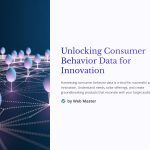
 In today’s rapidly evolving market landscape, understanding consumer behavior is paramount for businesses aiming to innovate and introduce successful new products. By harnessing consumer behavior data, companies can identify emerging trends, anticipate customer needs, and tailor their products to meet market demands effectively. This approach not only enhances product development but also strengthens market positioning and competitiveness.
In today’s rapidly evolving market landscape, understanding consumer behavior is paramount for businesses aiming to innovate and introduce successful new products. By harnessing consumer behavior data, companies can identify emerging trends, anticipate customer needs, and tailor their products to meet market demands effectively. This approach not only enhances product development but also strengthens market positioning and competitiveness.

The Importance of Consumer Behavior Analysis in Product Innovation
Understanding consumer behavior involves analyzing how individuals make purchasing decisions, what factors influence their choices, and how they interact with products and services. This analysis provides invaluable insights that drive product innovation. By comprehending consumer preferences and pain points, companies can develop products that resonate with their target audience, thereby increasing the likelihood of market success.

Methods of Collecting Consumer Behavior Data
To effectively analyze consumer behavior, businesses employ various data collection methods:
- Surveys and Questionnaires: Gathering direct feedback on preferences, needs, and satisfaction levels.
- Focus Groups: Engaging small groups in discussions to delve deeper into consumer attitudes and perceptions.
- Observational Studies: Monitoring consumer interactions in real-world settings to gain authentic insights.
- Digital Analytics: Utilizing online data, such as website traffic and social media engagement, to track behavior patterns.
Each method offers unique advantages and, when combined, provides a comprehensive understanding of consumer behavior.
Analyzing Consumer Behavior Data for Strategic Insights
Once data is collected, the analysis phase involves identifying patterns and trends that inform strategic decisions. Techniques such as statistical analysis, machine learning algorithms, and data visualization tools help in interpreting complex data sets. This analysis enables businesses to:
- Identify Market Gaps: Recognize unmet consumer needs that present opportunities for new products.
- Predict Trends: Anticipate shifts in consumer preferences to stay ahead of the competition.
- Personalize Offerings: Tailor products and marketing strategies to individual consumer segments for enhanced engagement.

Implementing Data-Driven Product Development
Integrating consumer behavior insights into product development involves:
- Ideation: Generating product ideas that align with consumer desires and market trends.
- Prototyping: Creating models based on consumer feedback to test and refine concepts.
- Testing: Conducting trials with target users to gather feedback and make necessary adjustments.
This iterative process ensures that the final product meets consumer expectations and achieves market acceptance.
5imz_ Case Studies: Successful Data-Driven Product Innovations
Several companies have effectively utilized consumer behavior data to drive innovation:
- Company A: Leveraged social media analytics to identify a growing interest in sustainable products, leading to the successful launch of an eco-friendly product line.
- Company B: Used purchase history data to develop personalized product recommendations, resulting in increased sales and customer loyalty.
- Company C: Analyzed customer feedback to redesign an existing product, enhancing user satisfaction and expanding market share.
These examples highlight the transformative power of consumer behavior data in guiding product innovation.
6imz_ Challenges and Ethical Considerations in Consumer Data Utilization
While leveraging consumer behavior data offers significant benefits, it also presents challenges and ethical considerations:
- Data Privacy: Ensuring compliance with regulations and maintaining consumer trust by protecting personal information.
- Data Accuracy: Addressing biases and inaccuracies in data collection to avoid misleading insights.
- Ethical Use: Balancing business objectives with ethical considerations to prevent manipulation or exploitation of consumer behavior.
Businesses must navigate these challenges responsibly to sustain long-term success and uphold their reputation.
*Capturing unauthorized images is prohibited*







